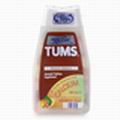
| Prevention and Screening
| 
|
Healthy Lifestyle
| Aspect |
Recommendations |
| Diet |
Less than 30% of calories from fat |
|
|
Less than 10% of calories from saturated or trans fat |
|
|
Less than 300 mg of cholesterol/day |
|
|
25 - 35 g of fibre/day |
|
| Physical Activity |
30-60 mins of cardiovascular exercise at least 3 times /week |
|
| Weight |
BMI less than 25 |
|
|
Males: waist less than 100 cm |
|
|
Females: waist less than 90 cm |
|
| Vitamin Supplements |
Folic acid 1 mg/day in women of chid-bearing age |
|
|
Calcium 1000 mg & vitamin D 400 IU/day in persons 50 to 65 |
|
|
Calcium 1500 mg & vitamin D 800 IU/day in persons 65 & over |
|
| Alcohol |
No more than 2 drinks/day |
|
|
If pregnant: no alcohol |
|
| Smoking |
No smoking |
|
|
|
|
|
|
|
|
|
|
Minimum Screening in Adults
| Age group |
Males |
Females |
Frequency |
| All |
Complete exam |
Complete exam |
Every year |
| From start of sexual activity to 70 years old |
N/A |
Pap smear |
Every year |
| 40 years old or over |
Fasting blood sugar |
Fasting blood sugar |
Every 3 years |
|
Lipid profile |
Lipid profile |
Every 5 years |
| 50 years old or over |
Fecal occult blood |
Fecal occult blood |
Every 2 years |
|
|
Rectal exam |
N/A |
Every year |
|
| 50 to 70 years old |
N/A |
Screening mammography |
Every 2 years |
|
|
|
|
|
|
| 65 years old or over |
Bone mineral density measurement |
Bone mineral density measurement |
Every 2 years |
|
|
|
|
|
|
|
|
|
|
|
|
|
|
|
|
Perinatal Care
| Weeks Gestation |
Visit / Test |
Comments |
| Pre-conception |
Folic acid supplementation, rubella status, varicella status |
Folic acid helps prevent neural tube defects; rubella & varicella vaccines are given before pregnancy if not immune |
| 1st Prenatal Visit |
Urine and blood tests, pelvic exam, Pap smear, and cultures for bacteria
|
E.g. to check for anemia, certain infections including HIV, and your blood type |
| Up till 30 weeks |
Routine visit every 4 weeks |
At each routine visit the following are done: weight, BP, urine dipstick, fetal position, symphysis-fundal height, fetal heart rate |
| 30 to 36 weeks |
Routine visit every 2 weeks |
|
| Beyond 36 weeks |
Routine visit every week |
|
| |
|
|
| 16 weeks |
Triple screen |
To assess the risk for neural tube defects & Down Syndrome |
| 18 weeks |
Ultrasound |
To confirm due date, check on baby's health, & assess position of the placenta in the uterus |
| 24 to 28 weeks |
50 g oral glucose tolerance test |
To screen for diabetes |
| 36 weeks |
GBS swab |
To test for bacteria that could infect the baby during delivery |
| 6 weeks post-partum |
Routine visit |
Assessment of bleeding, bladder function, bowel function, birth control, breast feeding, blues |
Well-Child Visits
Routine well-child visits should be made at ages:
3 days,
1, 2, 4, 6, 9, 12, 18 months,
2, 3, 4, and 5 years.
| Age |
Preventive Measure |
Anticipatory Guidance |
| A few days |
Sleep on back only
Car seat
Crib bars less than 6 cm apart
Second-hand smoke
Water temp less than 50 C |
Developmental stimulation
Emergency if fever > 38 C |
| 2 months |
Falls
Choking |
Solid foods
Teething |
| 6 months |
Dental check-ups
No bottle in bed
Burns
Electrical outlets
Sun exposure |
Night wakening
Separation anxiety
Poison control number |
| 9 months |
Brushing teeth |
|
| 12 months |
|
Discipline |
| 18 months |
|
Temper tantrums |
| 2 years |
|
Toilet training |
| 4 years |
Helmut |
|
| 5 years |
Learn address & phone number |
|
Childhood Immunizations

American Academy of Pediatrics, Committee on Infectious Diseases "Recommended Childhood Immunization Schedule--United States, January-December, 1998." Pediatrics 101:155-156, 1998.
Canadian Task Force on Preventive Health Care (CTFPHC)
U.S. Preventive Services Task Force (USPSTF)




